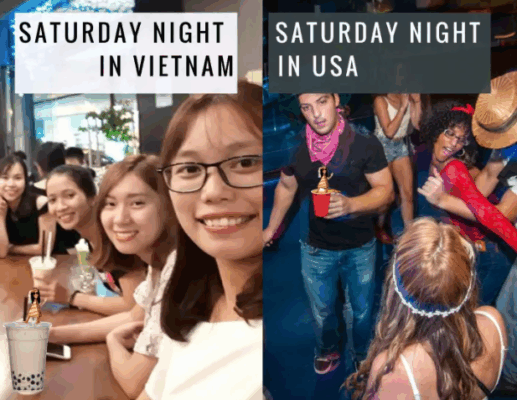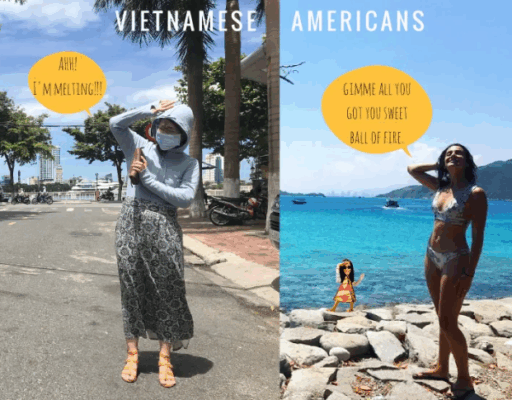English Corner
Cultural differences between Vietnam and other countries?
Cultural Differences Between Vietnam and Other Countries: A Deep Dive into Vietnamese Culture
Understanding cultural diversity helps travelers, students, and global citizens appreciate the unique identities of nations. Southeast Asia is home to many rich and long-standing cultures, and Vietnam is one of the most fascinating among them. When people discuss cultural differences between Vietnam and other countries, they often mention food, communication style, traditions, and the importance of community. However, these aspects are just the beginning.
This article explores major cultural differences between Vietnam and other countries, including the West and nearby Asian nations. Whether you plan to visit Vietnam, work with Vietnamese colleagues, or simply want to understand more about the world, this guide provides deep insights into what makes Vietnamese culture special.
A Brief Overview of Vietnamese Culture
Vietnam is shaped by thousands of years of history, influenced by Confucian philosophy, Buddhism, and traditional agricultural life. Community and family are central values. Modernization has transformed daily life, but traditions still remain strong.
Before comparing cultural differences between Vietnam and others, it is important to understand key pillars of Vietnamese culture:
- Strong family bonds and respect for elders
- Harmony and community mindset
- Indirect communication style
- Deep connection to ancestors and traditions
- Unique cuisine with fresh herbs and rice as the staple
These cultural foundations help explain why Vietnam can feel quite different from Western societies and even its Asian neighbors.

Cultural Differences Between Vietnam and Western Countries
1️⃣ Communication Style
One of the most notable cultural differences between Vietnam and Western countries is communication style.
| Vietnam | Western Countries |
| Indirect communication | Direct communication |
| Avoid saying “no” directly | Honesty is valued even if uncomfortable |
| Politeness > confrontation | Transparency > subtlety |
Vietnamese often communicate in a way that protects harmony and avoids conflict. They may use soft expressions or body language instead of direct refusal. Silence can also be a meaningful response.
Westerners, especially Americans or Europeans, value clear and straightforward communication. This difference can cause misunderstandings—for example, when a Vietnamese person says, “I will think about it,” it might actually mean “no.”
2️⃣ Personal Space and Social Behavior
Personal space expectations show strong cultural differences between Vietnam and many other countries.
- Vietnamese society is more collective and communal.
- People may stand close while talking, especially among friends or family.
- Physical touches like holding hands among same-gender friends are common and friendly—not romantic.
In contrast:
- Western culture emphasizes privacy and personal space.
- Touch is less common among friends.
- Individual boundaries are clearly respected.
Tourists sometimes feel that Vietnamese buses, markets, or sidewalks are crowded—but for locals, it is completely normal.
3️⃣ Family Structure and Responsibilities
Family plays a crucial role in Vietnamese life. One of the biggest cultural differences between Vietnam and Western countries is generational responsibility.
Vietnamese values:
- Children support parents financially and emotionally later in life.
- Extended families often live together.
- Decisions like career or marriage may involve family input.
Western values:
- Individuals are more independent.
- Elderly often live separately or in care facilities.
- Personal choice outweighs family expectations.
In Vietnam, family reputation matters deeply, influencing marriage, education, and social interactions.
4️⃣ Education and Respect for Authority
Confucian traditions strongly influence Vietnamese education:
- Teachers are respected almost like second parents.
- Students rarely challenge adults directly.
- Academic achievement is linked to family pride.
Western classrooms encourage:
- Questioning the teacher
- Creativity and self-expression
- Personal learning styles
This reveals significant cultural differences between Vietnam and Western education systems.
Read more: Top wordwide stationery brands 2026
5️⃣ Eating Customs and Dining Etiquette
In Vietnamese dining culture:
- Meals are shared from common plates.
- Chopsticks are the standard utensils.
- Food is meant to be enjoyed as a group.
- Elders eat first.
Western dining is more individual:
- Separate servings on each plate
- Fork and knife usage
- Guests may choose different dishes
Food is a clear reflection of cultural differences between Vietnam and other nations.

Cultural Differences Between Vietnam and Other Asian Countries
Although Vietnam shares some similarities with neighboring countries, there are still many differences worth noting.
Vietnam vs. China
China influenced Vietnam historically, but the two cultures developed distinct characteristics:
| Category | Vietnam | China |
| Language | Latin alphabet (quốc ngữ) | Chinese characters |
| Cuisine | Lighter, more herbs | Heavier seasoning, more oil |
| Social behavior | Humble, reserved | More expressive depending on region |
Both value family and tradition, but Vietnamese people maintain unique identities in their lifestyle and art.
Vietnam vs. Thailand
Both are popular tourism destinations, yet differences exist:
- Vietnam leans toward Confucian values, while Thailand is heavily influenced by Theravada Buddhism.
- Greeting customs differ: Thai people use wai gesture; Vietnamese bow slightly or smile.
- Street food is common in both, but Vietnamese dishes use fresher herbs and less spice compared to Thai cuisine.
Vietnam vs. Korea or Japan
Vietnam shares respect-based culture with Korea and Japan, but:
- Vietnam is more flexible with time and schedules (polychronic culture).
- Work culture is less strict than Japan or Korea.
- Indirect communication is common, but less formal than Japanese norms.
Comparing cultural differences between Vietnam and other Asian nations reveals how diverse Asia truly is.
Religion, Beliefs, and Spiritual Values
Vietnamese spirituality is a blend of:
- Buddhism
- Confucianism
- Taoism
- Ancestor worship
In Vietnam:
- People honor ancestors with altars at home.
- Traditional ceremonies are performed on special days.
Western nations often have more structured religious practice (Christianity, Islam, etc.) rather than ancestral traditions. This spiritual aspect shapes many cultural differences between Vietnam and others, especially regarding family, holidays, and moral values.
Holidays and Celebrations
Tết Nguyên Đán (Lunar New Year) is the most important holiday in Vietnam. It focuses on:
- Family reunions
- Paying respects to ancestors
- Wishing for prosperity
Western New Year celebrations, by comparison, are usually about:
- Parties
- Fireworks
- Individual enjoyment
Vietnam also has holidays like the Mid-Autumn Festival, while Western cultures celebrate Christmas and Easter.
These traditions display beautiful cultural differences between Vietnam and others around the globe.
Read more: Guide to fluency in English
Lifestyle and Work Culture (Cultural differences between Vietnam and Western Countries)
Vietnamese lifestyle prioritizes balance:
- People often enjoy coffee shops, street food, and social gatherings.
- Work hours are long, but leisure time with friends and family is important.
- Flexibility is part of daily life—less strict time management.
Western cultures tend to separate work and personal life more clearly, with emphasis on punctuality, planning, and efficiency.
This difference sometimes surprises foreign colleagues working in Vietnam.
Gender Roles and Social Expectations
Traditional Vietnamese society places certain expectations on men and women—especially in rural areas. While gender equality is improving, some customs remain such as:
- Women often manage the household.
- Men are seen as primary financial providers.
In comparison, Scandinavian or North American nations encourage equal roles in most aspects of life.
Understanding these cultural differences between Vietnam helps avoid stereotypes and encourages supportive interactions.
Etiquette and Daily Manners
Small actions reflect big cultural values in Vietnam:
- Avoid pointing fingers at others
- Express gratitude with a gentle smile
- Give and receive items using both hands
- Remove shoes when entering homes
Travelers unaware of these gestures might unintentionally appear rude. Learning them shows respect for Vietnamese culture.
How Understanding Cultural Differences Helps International Relationships
Recognizing cultural differences between Vietnam and other countries improves:
- Business cooperation
- Tourism experiences
- Classroom interactions
- Communication between friends and families
Instead of judging differences, appreciation and curiosity help create meaningful global connections.
Final Thoughts: Embracing Cultural Diversity
The world becomes more exciting when we understand each other. Exploring cultural differences between Vietnam and other countries reminds us that every culture is shaped by its unique history, beliefs, and way of life.
Vietnam is a beautiful blend of tradition and modern energy. Whether you’re enjoying a warm bowl of phở, visiting a sacred pagoda, or joining a family meal, you will feel welcomed by a culture that values hospitality, harmony, and community.
Learning about these differences doesn’t separate us—it brings us closer as global citizens. By embracing cultural diversity, we gain new perspectives and make the world a more connected place.
Read more:
Reasons why you should visit Ha Long Bay in Vietnam
Malaysia and Thailand – Which country is cheaper for tourists?


